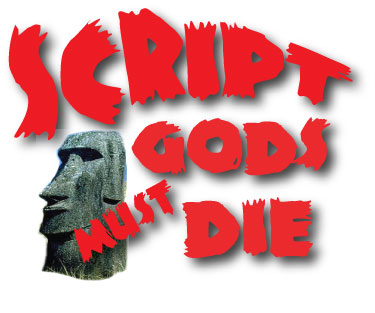Ok, today it’s part 2 of the M O N S T E R concept series! A further look at ideas that gained their writers access to the fabulously private Country Club run behind the moat, tall towers and parapet, namely the barriers Studios put up to any idea this is NOT a monster concept. Who exactly buys these ideas? To understand who we’re talking about, and to save time, let’s look at a Wikipedia chart of Studios and Mini-Majors.
A major film studio is a production and distribution company that releases a substantial number of films annually and consistently commands a significant share of box-office revenues in a given market. In the North American, Western, and global markets, the major film studios, often simply known as the majors, are commonly regarded as the six diversified media conglomerates whose various movie production and distribution subsidiaries command approximately 90 percent of the U.S. and Canadian box office. The term may also be applied more specifically to the primary motion picture business subsidiary of each respective conglomerate. The “Big Six” majors, whose operations are based in or around Hollywood, are all centered in film studios active during Hollywood’s Golden Age of the 1930s and 1940s. In three cases—20th Century Fox, Warner Bros., and Paramount—the studios were one of the “Big Five” majors during that era as well. In two cases—Columbia and Universal—the studios were also considered majors, but in the next tier down, part of the “Little Three”. In the sixth case, Walt Disney Studios was an independent production company during the Golden Age; it was an important Hollywood entity, but not a major.
Most of today’s Big Six control subsidiaries with their own distribution networks that concentrate on arthouse pictures (e.g., Fox Searchlight) or genre films (e.g., Sony‘s Screen Gems); several of these specialty units were shut down or sold off between 2008 and 2010. The six major studios are contrasted with smaller production and/or distribution companies, which are known as independents or “indies”. The leading independent producer/distributors—Lionsgate Films, The Weinstein Company, and former major studio MGM—are sometimes referred to as “mini-majors”. From 1998 through 2005, DreamWorks SKG commanded a large enough market share to arguably qualify it as a seventh major, despite its relatively small output. In 2006, DreamWorks was acquired by Viacom, Paramount’s corporate parent. In late 2008, DreamWorks once again became an independent production company; its films are distributed by Disney’s Touchstone Pictures.
The major studios are today primarily backers and distributors of films whose actual production is largely handled by independent companies—either long-running entities or ones created for and dedicated to the making of a specific film. The specialty divisions often simply acquire distribution rights to pictures in which the studio has had no prior involvement. While the majors do a modicum of true production, their activities are focused more in the areas of development, financing, marketing, and merchandising.
Today’s Big Six
^1 Paramount: 19.3% (Prev. totals: 2010—16.8%; 2009—14.3%; 2008—17.2%; 2007—16.1%; 2006—11.0%; 2005—9.8%; 2004—6.8%)
^2 Warner Bros.: 18.1% (Prev. totals: 2010—18.0%; 2009—20.1%; 2008—19.4%; 2007—20.5%; 2006—14.9%; 2005—21.7%; 2004—17.7%)
^3 Sony (Columbia/Screen Gems): 12.6%; Sony Classics: 0.8% (Prev. totals: 2010—12.8%; 2009—14.2%; 2008—13.4%; 2007—13.4%; 2006—19.3%; 2005—11.1%; 2004—16.8%)
^4 Disney: 12.2% (Prev. totals: 2010—14.3%; 2009—11.9%; 2008—11.4%; 2007—15.3%; 2006—16.7%; 2005—14.6%; 2004—16.5%)
^5 Universal: 10.1%; Focus Features: 1.2% (Prev. totals: 2010—9.2%; 2009—10.0%; 2008—12.9%; 2007—12.7%; 2006—10.9%; 2005—13.2%; 2004—10.8%)
^6 20th Century Fox: 9.6%; Fox Searchlight 1.5% (Prev. totals: 2009—14.8%; 2009—16.1%; 2008—13.2%; 2007—11.9%; 2006—17.0%; 2005—16.5%; 2004—11.7%)
The “mini-majors”
Mini-major studios (or “mini-major”) are the larger USA film production companies that are smaller than the major studios that attempt to compete directly with them.[2]
Current
- DreamWorks Animation[3]
- DreamWorks[4]
- Lions Gate Entertainment
- Metro-Goldwyn-Mayer/United Artists[5]
- Relativity Media[6]
- The Weinstein Company[7]
How will you ever become more than a caddy or ball boy for the exclusive members of this Country Club? By looking at what these folks actually buy, and working your ideas toward that. As previously stated: Know Thyself. If this isn’t the stuff you write, why would you try to beat the best in the world at their own game? Far better to find out what it is you write well, and work toward executing that. Do that well enough, I guarantee you, you will catch the eye of these folks.
So, that said, onto a few more of the MEGA-concept ideas of the past:
- SPEED
A young cop must prevent a bomb exploding aboard a city bus by keeping its speed above 50 mph.
- JURASSIC PARK
Cloned dinosaurs. Plans for a Disney-style theme ride go awry with an island-wide power blackout. Humans on the island struggle to survive.
$915 million worldwide sales. Again, good script but the billion hook is—Clone dinosaurs in the 21st Century.
- HOME ALONE
Two losers try to kidnap a resourceful child left alone at home.
500+ million dollar comedy. Macaulay Culkin becomes a star afterward. Joe Pesci has seen far better days as the pure villan.
- JAWS
A Great White shark invades Amity Island, killing people until a police chief, a marine scientist and grizzled fisherman set out to stop it.
- COWBOYS AND ALIENS
“A spaceship arrives in Arizona, 1873, to take over the Earth, starting with the Wild West region. A posse of cowboys and natives are all that stand in their way.”(imdb)
Crappy movie. You get the feeling that the powers-that-be almost feed this dreck into a computer…CG genre mashups (Abraham Lincoln, Vampire Killer–yuk) Go back and find every Brothers Grimm story, Hans Christen Anderson fable, or Greek myth and mash it up with Zombies, Superheros or Vampires.
This isn’t you writing something you have to write. This is you paying rent, trying to get on the board, and if the movie makes 163 million like Cowboys And Aliens, maybe have film students around the country screaming about what crap your movie is while you lounge in a Bel Air pool, taking meetings as your agent and manager eagerly scheme for you to write the first draft of the sequel.
- LIAR, LIAR
A fast track lawyer can’t lie for 24 hours due to his son’s birthday wish.
“Fletcher Reede, a fast talking attorney, habitual liar, and divorced father is an incredibly successful lawyer who has built his career by lying. He has a habit of giving precedence to his job and always breaking promises to be with his favorite young son Max, but Fletcher lets Max down once too often, for missing his own son’s birthday party. But until then at 8:15 Max has decided to make an honest man out of him as he wishes for one whole day his dad couldn’t tell a lie. When the wish comes true all Fletcher can do is tell the truth and cannot tell one lie.”(Imdb)
Sure, eventually you’ll need about a thousand gags for Jim Carrey, and you’ll need to come up with the semblance of a story…but the only way Jim Carrey ever even reads your script is because you thought up the killer concept–a habitually lying lawyer who can’t lie for 24 hours. The simplicity of that! Brilliant. Apparent simplicity of so many of these high concept ideas is just that—apparent. How does one train their mind to pursue these epically simple billion dollar ideas?
Great question. Answer: ?


